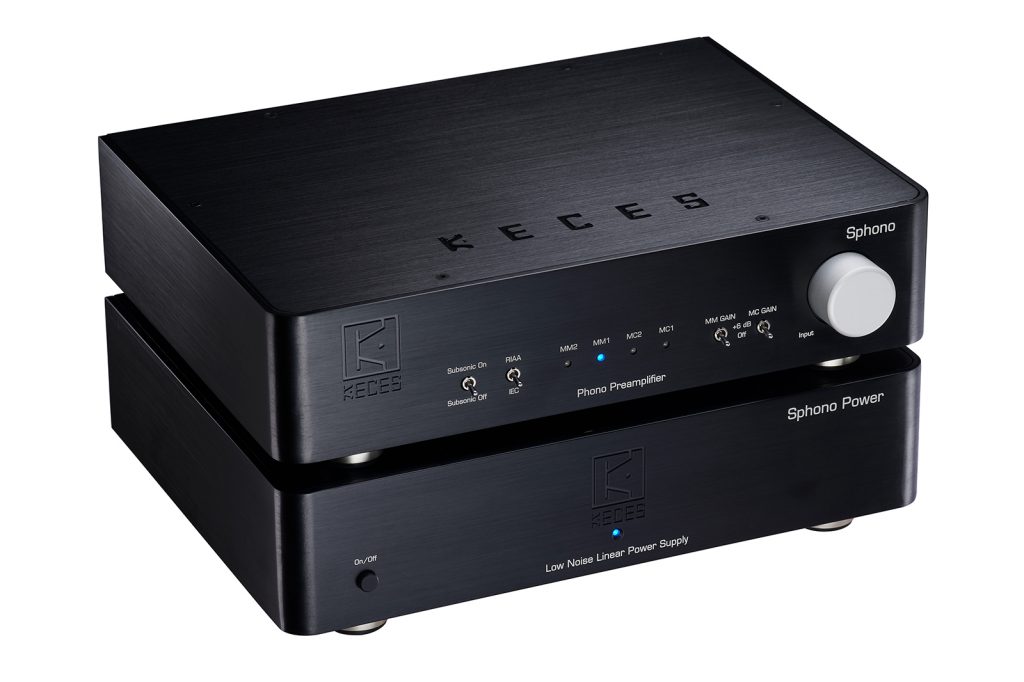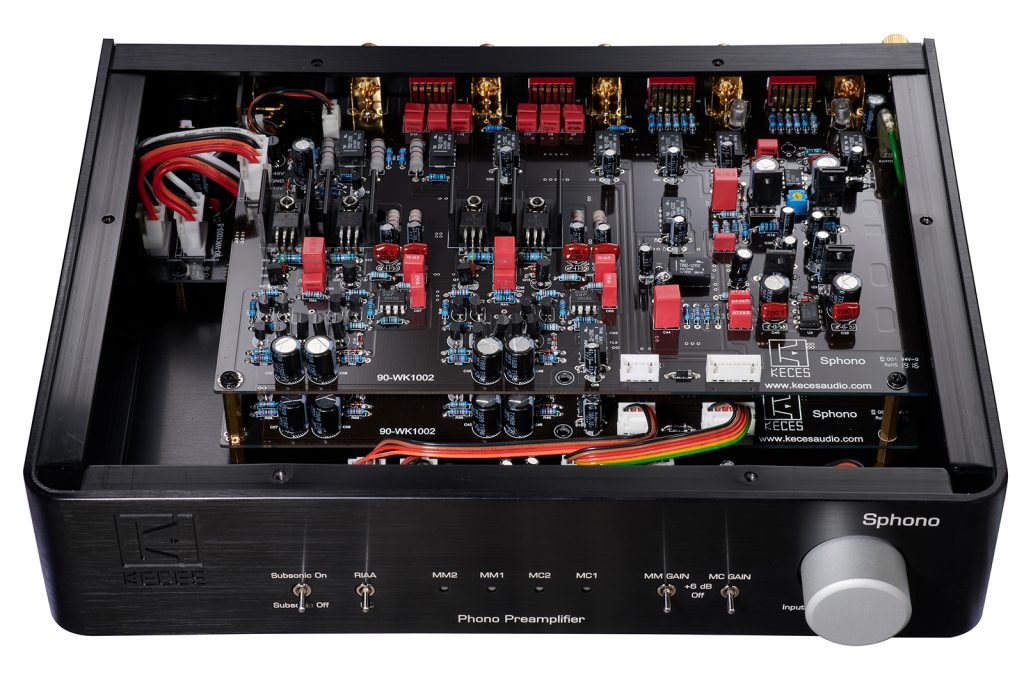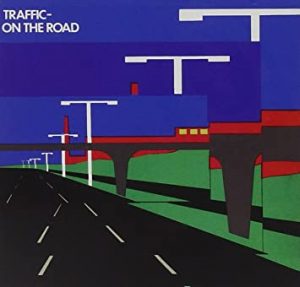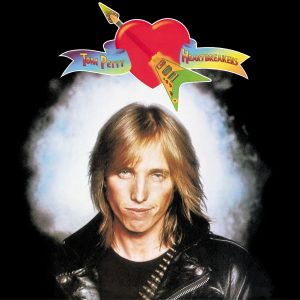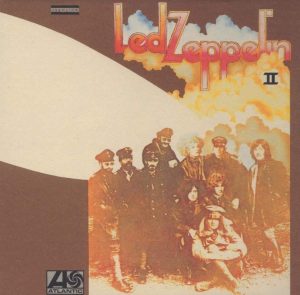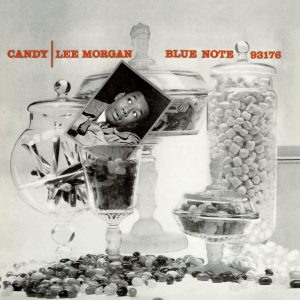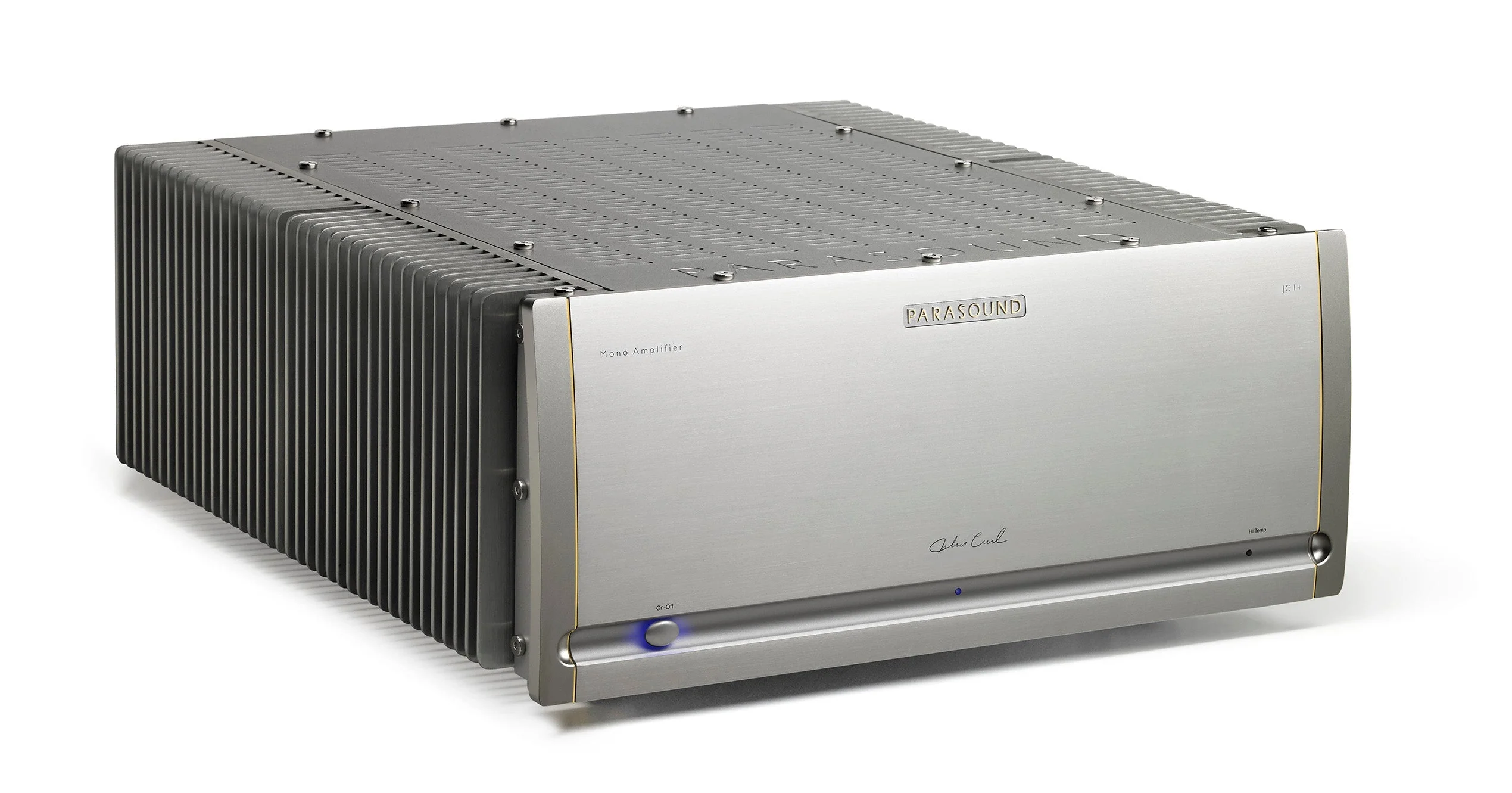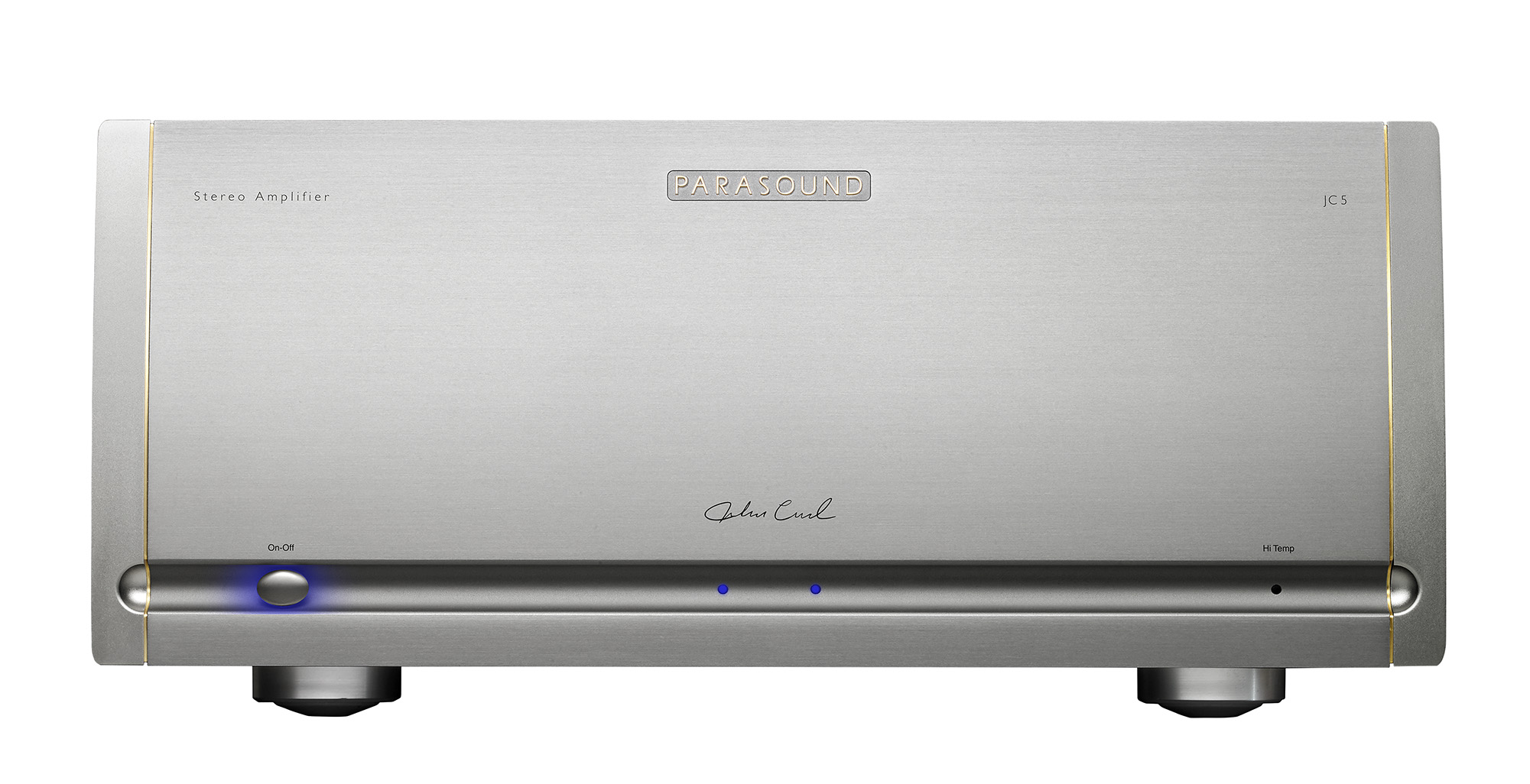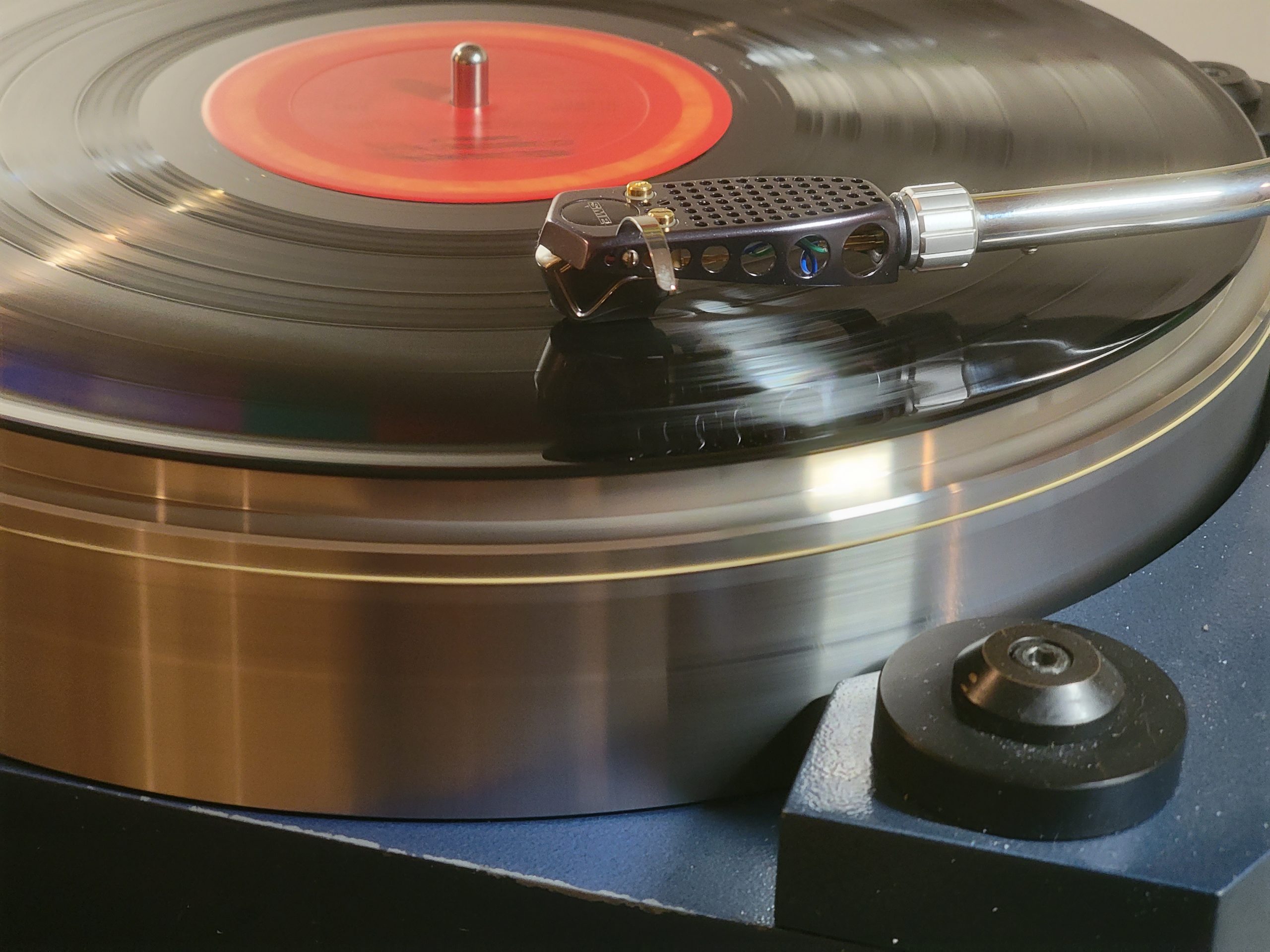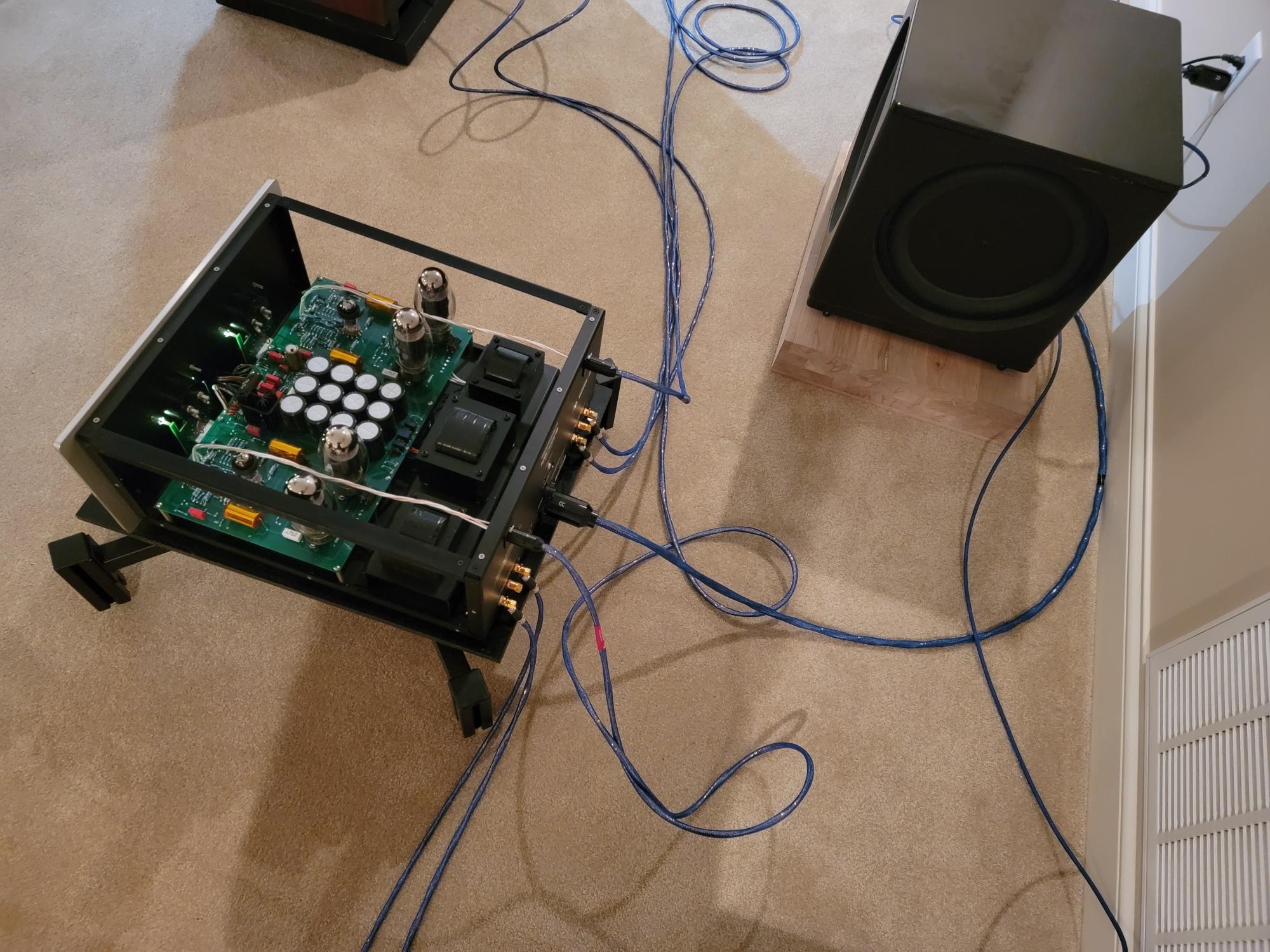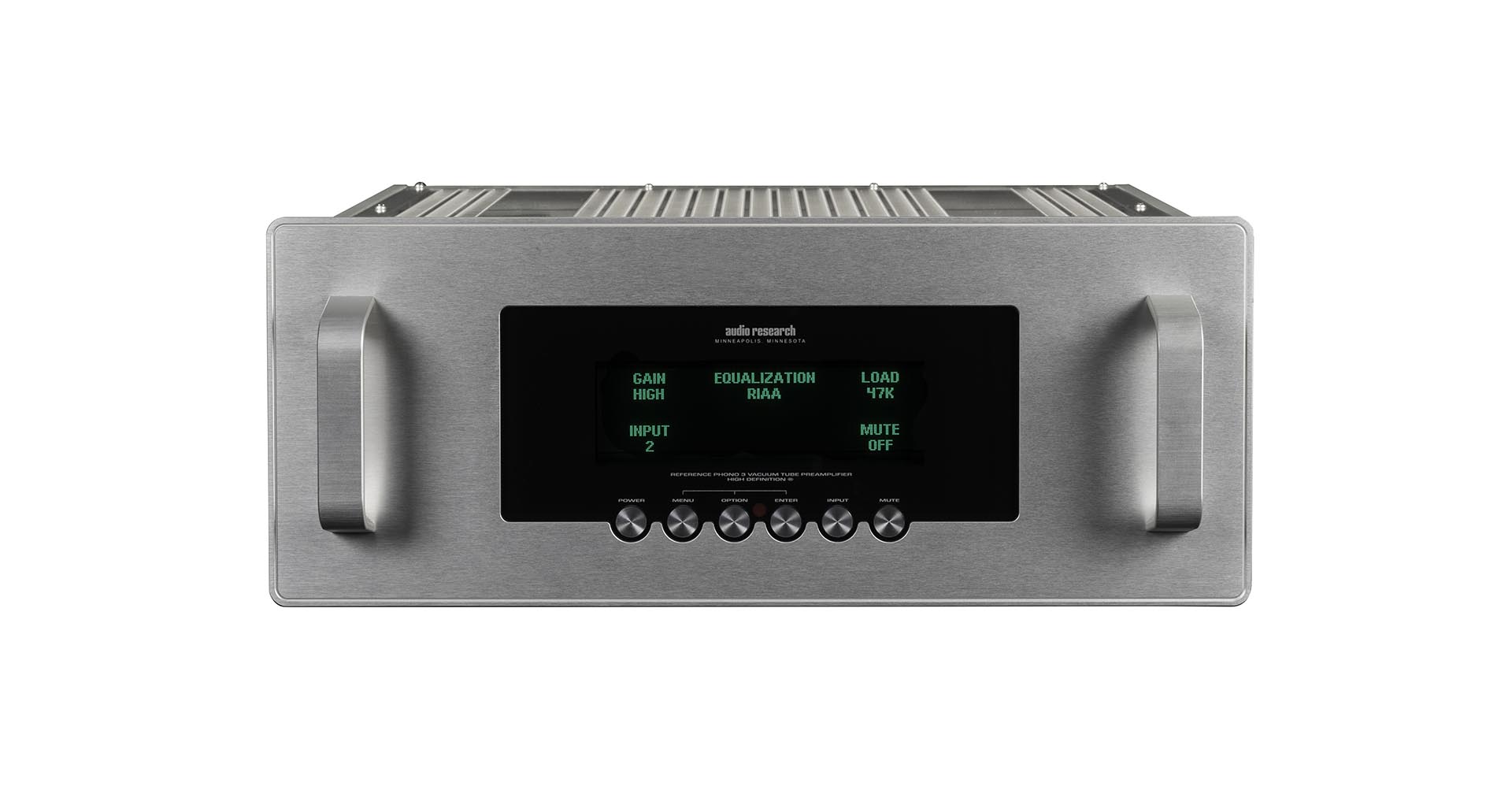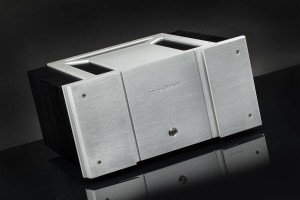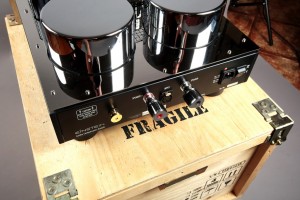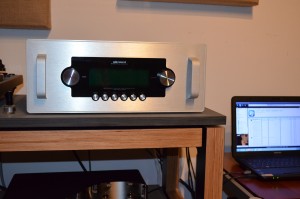What if I told you there is a two box phono preamp with one box being the outboard power supply and the other box contains the dual mono balanced phono circuit, and that it has inputs for four separate cartridges (two moving magnet and two moving coil), complete loading adjustments for all four phono inputs on the back panel, and a rotary switch on the front panel to quickly and easily switch between the four inputs? The gain is selectable from the front panel, it also has a subsonic filter you can control from the front panel as well as switch for choosing either the RIAA EQ curve or the IEC EQ curve. What if I told you that it costs $2600? This phono preamp is real, and it's called the KECES Sphono & Sphono Power (supply). For the sake of brevity, I will simply refer to the Sphono & Sphono Power here in this review as the Sphono.
So the Sphono represents a conundrum because it offers so many features at its price point that I'm not sure it has any real competition assuming you find the feature set of this phono preamp to be important to you. Price wise, a close competitor would be the Parasound JC 3+ phono preamplifier. However, the JC 3+ only has one phono input and it doesn't have an outboard power supply. My point to telling you this is that people who are looking for the feature set of the Sphono will not be in the same market as people looking for a new phono preamp with one or two phono inputs.
The Sphono arrived in a nice sturdy cardboard box and the internal packaging was excellent. This is always a confidence booster for me as it shows pride from the manufacturer as well as professionalism. I never take that for granted as I have had some horror shows arrive at my door in the past. I carefully unpacked the Sphono and set it on my SRA rack after removal of my ARC Ref 3 phono. The looks of the Sphono evokes a mashup of early Mark Levinson, Krell, and Counterpoint gear. The supplied umbilical cord for the Sphono is very short, and the pictures from KECES website shows the phono section sitting on top of the power supply. I didn't want to set it up that way in my system as somehow sitting a phono circuit on top of a power supply doesn't appeal to me. Thankfully the umbilical cord is long enough that I could set the power supply and the phono circuit side by side in my rack.
For the purpose of this review, I was using my Micro Seiki SX-8000 table with the flywheel, SME 3012-R tonearm mounted on the Micro Seiki SME "heavy" arm board, and my Lyra Etna SL cartridge. The balanced outputs of the Sphono were fed into my ARC Ref 6 line stage which in turn fed into my ARC Ref 75 amplifier. My speakers are the JBL 4345s and I have a pair of Definitive Technology Reference subs.
Specifications of the Sphono
- Power by High Quality Linear Power Supply (Sphono Power), provide pure DC+-48V and +15V high dynamic range to Sphono.
- Dual Mono design.
- Balanced and unbalanced outputs.
- Front panel input select switch for 2 MM inputs and 2 MC inputs.
- Front panel subsonic filter switch.
- Front panel MM/MC Gain select.
- Front panel EQ curve select for IRAA and IEC.
- Variable MC impedance adjustment of 56/100/220/470/1K2/47K ohms.
- Variable MM loading adjustment of 47/100/150/220/330/470 PF.
- RIAA/IEC accurate to within 0.2dB.
- Audiophile grade resistors and capacitors.
- Audiophile grade XLR output jacks.
- Gold-plated RCA input and output jacks.
- Frequency Response: 20-20Khz
- THD: MM <0.002%, MC <0.09%.S/N Ratio
- MM 96dB A-weighted, MC 82dB A-weighted.
- Input Impedance: MM 47k ohm, MC variable 56/100/220/470/1K2/47K ohm.
- Input Capacitance: MC 100PF, MM 47/100/150/220/330/470PF.
- Gain: 40dB/46dB for MM, 60dB/66dB for MC.
- Power In: DC +- 48V and +15V (Power by Sphono Power).Casing 4mm Aluminum
- Dimensions: (WxDxH) 300x220x66mm
- Weight: 3.5KG
Specifications of the Sphono Power
- AC Input Voltage: 110V-120V, 60Hz / 220V-240V, 50Hz (Switchable).
- DC output Voltage: DC +- 48V and +15V.
- Power Consumption: 18 Watts
- Casing: 4mm Aluminum
- Dimension: (WxDxH) 300x220x66mm
- Weight: 5KG
Even though KECES refers to the Sphono as being dual mono, the power supply is not dual mono. The actual phono circuit is dual mono and you can see the two separate phono circuit boards from the picture that shows the inside of the case that holds the actual phono circuit.
During the review period, I left the Sphono powered on 24/7 since it is solid state and it's not drawing lots of power. I set the front panel gain switch to +6 dB in order to get the maximum gain of 66dB because my Etna SL needs lots of gain since the output is 0.25mv. The Sphono had plenty of gain with the Etna SL in my system with zero noise issues which is always a relief. Loading for the Etna SL was set at 220 ohms.
If I had to choose one word to describe the sound of the Sphono in my system, that word would be "smooth." I actually found it hard to put the sound of the Sphono inside of some audiophile box that we usually paint things in. It's not bright. It's not dark. It's not warm or cold. The Sphono just sounds like music. Even though the Sphono doesn't quite have the dynamic envelope of the higher priced spread, I will step out on a limb here and say that in the context of systems that would likely be used with a $2600 phono preamp, the Sphono will not be the limiting factor to the sound quality of LPs.
The one phrase that kept showing up in my listening notes is "very live sounding" which means I felt transported either to a live show or to a live in studio recording where all the musicians are in the studio at the same time making the music. The first example is Traffic On the Road "The Low Spark of High Heeled Boys." This is a live LP and it sounds very much alive through the Sphono. It has very good dynamics and you feel like you are at the show.
The self-titled first album Tom Petty and the Heartbreakers is one of my favorite Tom Petty albums. Once Jeff Lynne started producing their albums, they were never the same for me. Jeff Lynne has heavy sonic thumbprints that he stamps on everything he touches. Think large shades of ELO and you get the picture. The song "Hometown Blues" sounds like you were in the studio when the recording was made. The instruments and vocals were captured with great fidelity and the Sphono brings them to life.
The Led Zeppelin II was next up. I played my Classic Records Quiex SV-P and cued up "Ramble On," it sounded great from the jump. My notes showed that the drums sound real with great weight and dynamics. The impact of the drums being hit during the solo is very special. Accurately recording the sound of drums is difficult to pull off even though the engineers who recorded the great jazz albums had it figured out on the 1950s. For a rock recording, Eddie Kramer did a really good job of capturing John Bonham's drum kit.
Moving on to some jazz, Lee Morgan Candy is a great album with sonics to match. The title song "Candy" starts off with Art Taylor on drums and they sound very dynamic and real. When Morgan comes in with his trumpet and Sonny Clark comes in on piano, even though this is a studio recording, it really gives the vibe of being at a live concert minus the crowd noise because that is how live this LP sounds. The next cut "Since I Fell For You" didn't disappoint either. Lee's trumpet sounds as smooth as butter even though it is cutting through the air like trumpets do. It's just a beautiful recording that the Sphono lets shine through.
Last but not least was the MoFi 45 RPM version of Dire Straits Brother In Arms. The MoFi 45 RPM version has the bass goosed up, and it's especially noticeable on the cut "The Man's Too Strong." There are repeated cannon shots throughout "The Man's Too Strong" that build up in intensity as the song progresses. The bass pressure waves they produce in your room are low in frequency and high in intensity. I played this cut to make sure the Sphono was capable of reproducing these low frequencies with the weight and intensity that were encoded in the grooves. The Sphono passed that test with flying colors. If this recording doesn't seriously pressurize your room and rattle your bones through your listening chair, something is a wee bit amiss.
In summary, the KECES Sphono packs a lot of performance, features, and high sound quality that belies its price point in the market place. If you are one of the people who either have a table that accepts multiple arms or you have multiple tables, arms, and cartridges, I really don't know of any competition the Sphono has at $2600. This is a very quiet phono stage and highly flexible with the two moving coil inputs and two moving magnet inputs and most importantly it sounds really good. Sometimes when you review gear, you look forward to the day the review is finished so you can reinstall your reference gear back in your system. Even though I own the ARC Ref 3 phono preamplifier which is many multiples of the cost of the Sphono, I was happy to have had the pleasure and experience of listening through the Sphono.
Sphono Phono Stage
Retail: $2600
HUIKANG ELECTRONIC CO., LTD.
1F., No.2, Ln. 313, Sec. 6, New Taipei Blvd., Taishan Dist., New Taipei City 24355, Taiwan
886.2.2901.1018




